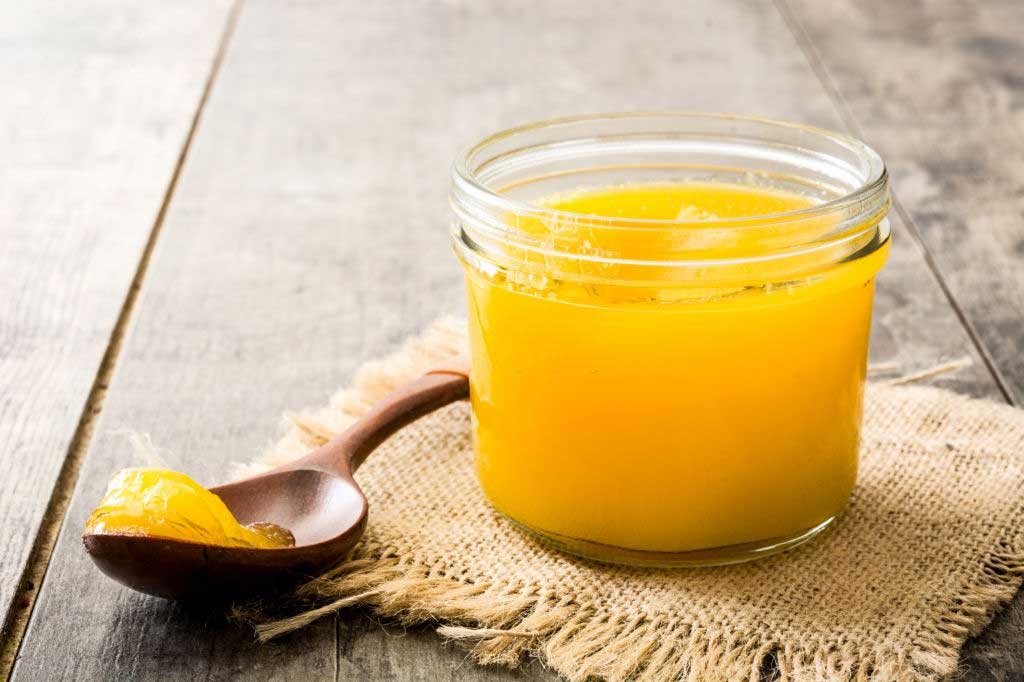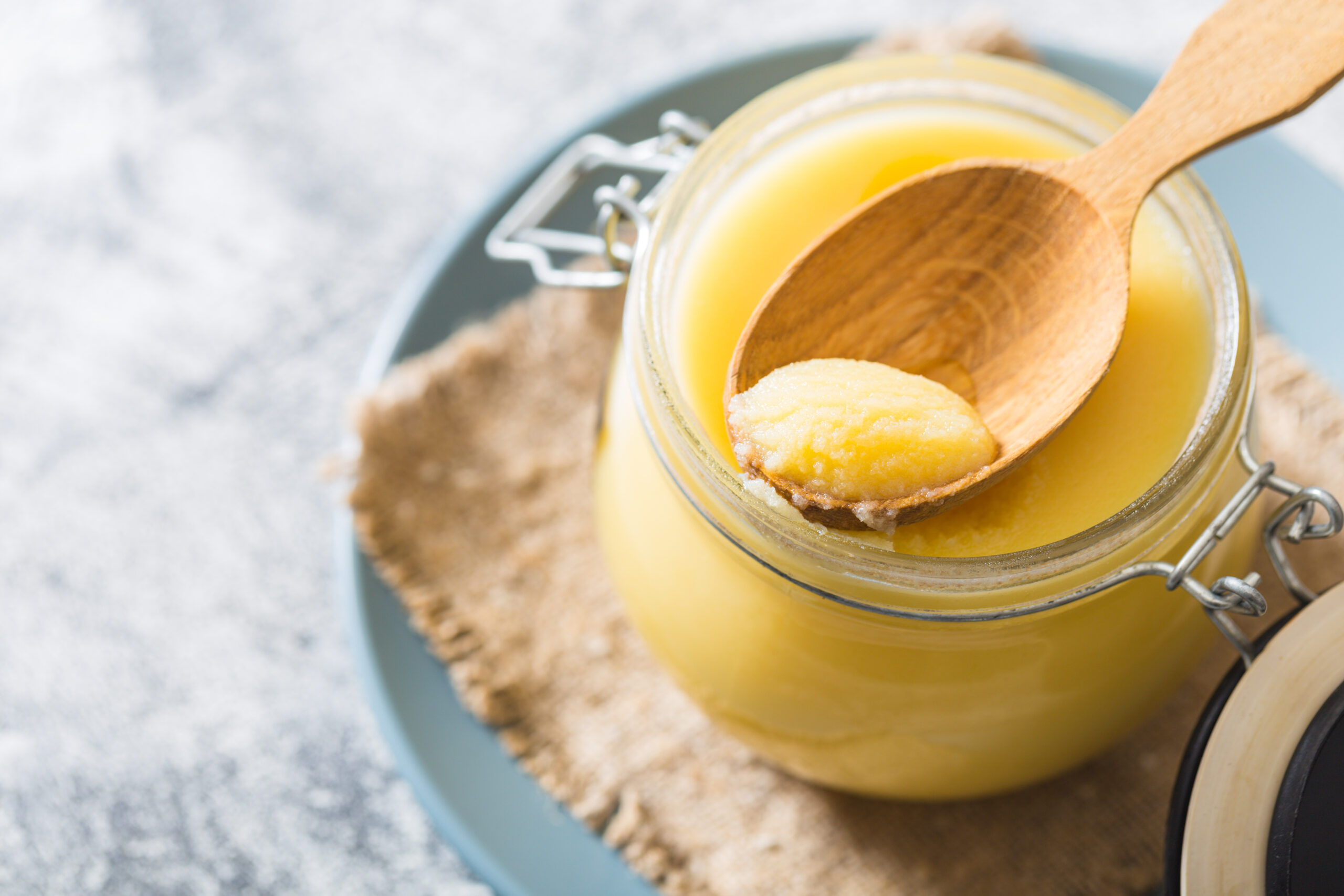
Ghee, a clarified butter originating from India, has held a revered place in Ayurvedic medicine and traditional diets for centuries. While ghee itself is becoming well-known worldwide for its numerous health benefits, cultured ghee remains a lesser-known but highly valuable variation. In this article, we’ll take a deep dive into what cultured ghee is, its nutritional value, health benefits, and why it might be a beneficial addition to your daily routine.
What Is Ghee?
Ghee is a form of clarified butter made by simmering butter to remove the milk solids, leaving behind pure, golden butterfat. The process removes most of the lactose and casein, making it a favorable option for those with dairy sensitivities. Ghee has a high smoke point, rich flavor, and is a versatile cooking fat, used in various recipes from stir-fries to baked goods.
The Traditional Role of Ghee in Diets and Cultures
In Indian and Ayurvedic traditions, ghee is more than just a cooking fat. It’s viewed as a healing food, believed to improve digestion, lubricate joints, and enhance cognitive function. Ancient Ayurvedic texts refer to ghee as “liquid gold,” with powerful health benefits that go beyond basic nutrition.
What Is Cultured Ghee?
Cultured ghee is a variation of traditional ghee, made by culturing the butter before clarifying it. This additional step involves fermenting the cream or butter with specific bacterial cultures, such as Lactobacillus, which convert lactose into lactic acid. Once the cream or butter is cultured, it undergoes the same clarifying process as regular ghee to remove the remaining milk solids.

The Culturing Process
- Culturing the Cream: Fresh cream is inoculated with bacterial cultures that convert lactose into lactic acid. This fermentation process takes place over several hours, allowing the bacteria to grow and transform the cream.
- Butter Churning and Clarification: The cultured cream is then churned into butter, which is subsequently simmered to remove milk solids and water content. This process leaves behind pure butterfat, resulting in cultured ghee.
Differences Between Regular Ghee and Cultured Ghee
- Lactic Acid Content: The primary distinction lies in the presence of lactic acid. Cultured ghee contains a small amount of lactic acid, providing additional digestive benefits and making it easier to digest.
- Enhanced Flavor Profile: Cultured ghee often has a richer, slightly tangier taste due to the fermentation process.
- Lactose-Free Option: Cultured ghee is ideal for those with lactose intolerance or sensitivity, as the culturing process breaks down lactose into lactic acid.
Nutritional Profile of Cultured Ghee
Cultured ghee is rich in essential nutrients, providing both macro and micronutrients beneficial for health. Here’s a closer look at its nutritional content:
Macronutrients
- Healthy Fats: Cultured ghee is primarily composed of saturated fats, with a small amount of monounsaturated fats. These fats support various bodily functions, including hormone production and energy storage.
- Calories: Ghee is calorie-dense, with around 120 calories per tablespoon. This makes it an excellent source of energy for those following high-fat, low-carb diets like keto.
Vitamins and Minerals
- Vitamin A: Supports vision, immune function, and skin health.
- Vitamin E: An antioxidant that protects cells from damage.
- Vitamin K2: Important for bone health and cardiovascular health.
- Butyrate: A short-chain fatty acid with anti-inflammatory properties, which can promote gut health.
Unique Compounds in Cultured Ghee
Cultured ghee also contains butyrate, conjugated linoleic acid (CLA), and small amounts of lactic acid, making it a more digestible and beneficial choice for gut health than traditional ghee.
Health Benefits of Cultured Ghee
Cultured ghee’s unique nutritional profile and easy digestibility offer numerous health benefits. Below, we discuss how this variation of ghee can positively impact digestion, inflammation, heart health, and more.
1. Supports Digestive Health
Cultured ghee is highly regarded in Ayurveda for its positive effects on digestion. The presence of lactic acid aids in breaking down food, supporting better digestion and nutrient absorption. Additionally, the butyrate in ghee has been shown to nourish the cells lining the gut, promoting overall gut health.
Benefits of Butyrate in Gut Health
Butyrate, a short-chain fatty acid found in cultured ghee, is a known anti-inflammatory agent and can help prevent gut-related conditions like IBS (irritable bowel syndrome). It supports the integrity of the intestinal lining, reducing permeability and preventing the “leaky gut” syndrome, a condition where toxins leak through the gut wall into the bloodstream.
2. Anti-Inflammatory Properties
The butyrate in cultured ghee is not only beneficial for gut health but also has strong anti-inflammatory properties. Studies have found that butyrate can help reduce inflammation markers in the body, which may alleviate symptoms of inflammatory conditions like arthritis and even certain autoimmune disorders.
3. Supports Cardiovascular Health
Although ghee is rich in saturated fats, emerging research suggests that not all saturated fats are harmful. Ghee contains short-chain and medium-chain fatty acids that can support heart health when consumed in moderation.
- Omega-3 Fatty Acids: These beneficial fats help balance cholesterol levels and reduce triglycerides.
- Vitamin K2: K2 in cultured ghee helps reduce arterial calcification, a major risk factor for heart disease.
4. Enhances Brain Function
The medium-chain triglycerides (MCTs) in cultured ghee provide a quick source of energy for the brain, which may enhance focus, memory, and cognitive function. Additionally, Ayurveda associates ghee consumption with increased clarity of mind, improved mood, and overall emotional balance.
5. Boosts Immune Function
Cultured ghee is rich in antioxidants such as vitamins A and E, which strengthen the immune system by combating oxidative stress. The lactic acid from cultured ghee can also support the growth of beneficial gut bacteria, which play a key role in immune defense.
How to Use Cultured Ghee in Your Diet
Cultured ghee is a versatile fat that can be used in various ways in the kitchen. Here are some ideas for incorporating it into your meals:
Cooking with Cultured Ghee
Cultured ghee has a high smoke point (around 450°F or 232°C), making it suitable for high-heat cooking methods such as frying, sautéing, and roasting. Unlike other cooking oils, it won’t break down or oxidize at high temperatures, ensuring that its nutrients remain intact.
Baking and Topping
- As a Butter Substitute: Use cultured ghee in place of butter in baking recipes for added flavor and health benefits.
- On Vegetables: Drizzle warm cultured ghee over steamed vegetables for a flavorful boost.
- On Toast or Bread: Spread cultured ghee on toast or bread as a flavorful, healthy alternative to butter.
Choosing Quality Cultured Ghee
To reap the full benefits of cultured ghee, it’s important to choose a high-quality product. Look for cultured ghee that is organic, grass-fed, and free from additives or preservatives. Grass-fed cultured ghee tends to have higher amounts of CLA and omega-3 fatty acids, making it a more nutrient-dense option.
DIY: Making Cultured Ghee at Home
For those interested in a homemade approach, making cultured ghee at home is a straightforward process. You can start by fermenting heavy cream with a small amount of yogurt or kefir, then proceed to churn and clarify the butter to make ghee. This ensures you know exactly what goes into your cultured ghee and allows you to control the quality of ingredients.
Potential Drawbacks of Cultured Ghee
While cultured ghee offers numerous benefits, it may not be suitable for everyone. Some individuals, particularly those sensitive to fats, may experience digestive discomfort. It’s advisable to introduce cultured ghee gradually and monitor how your body responds. Those with a history of high cholesterol or heart disease should consult with a healthcare provider before adding large amounts of ghee to their diet.
Cultured Ghee in Traditional Medicine and Modern Wellness
In Ayurveda, ghee is often used as a “carrier” substance that delivers herbs and other medicinal ingredients deep into the tissues. Modern wellness practices also embrace cultured ghee for its holistic health benefits, especially in digestive health and detox routines.
Conclusion:
Cultured ghee is a nutritious, flavorful fat that offers a host of health benefits, especially for digestive health, inflammation reduction, and cardiovascular support. It aligns well with both traditional practices and modern dietary needs, providing a versatile cooking fat that supports overall well-being.
Incorporating herbal products alongside cultured ghee can amplify its health benefits. Many herbs—such as turmeric, ginger, and ashwagandha—are known to work synergistically with ghee in Ayurvedic medicine. Combining these potent herbs with cultured ghee in meals or wellness routines may provide a holistic approach to health, balancing the body and mind for optimal wellness.
By integrating cultured ghee and herbal products into your diet, you can enjoy the best of both traditional and modern health practices, supporting longevity, vitality, and overall quality of life.